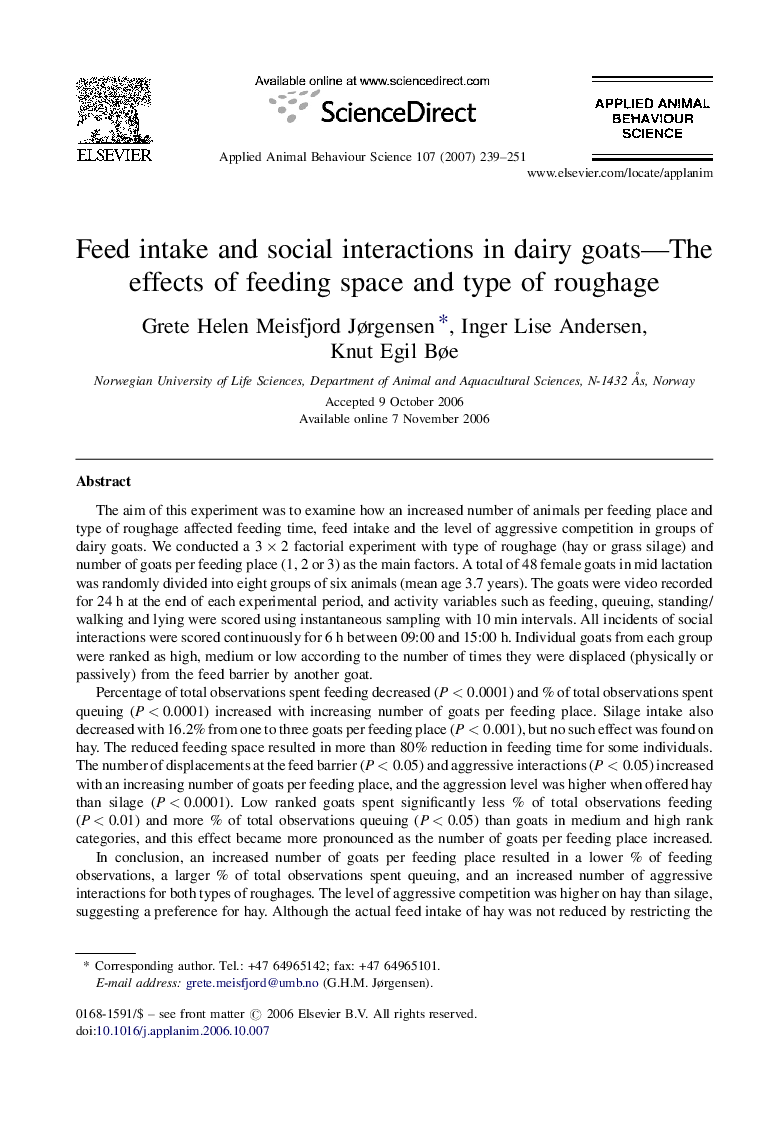| Article ID | Journal | Published Year | Pages | File Type |
|---|---|---|---|---|
| 4523873 | Applied Animal Behaviour Science | 2007 | 13 Pages |
The aim of this experiment was to examine how an increased number of animals per feeding place and type of roughage affected feeding time, feed intake and the level of aggressive competition in groups of dairy goats. We conducted a 3 × 2 factorial experiment with type of roughage (hay or grass silage) and number of goats per feeding place (1, 2 or 3) as the main factors. A total of 48 female goats in mid lactation was randomly divided into eight groups of six animals (mean age 3.7 years). The goats were video recorded for 24 h at the end of each experimental period, and activity variables such as feeding, queuing, standing/walking and lying were scored using instantaneous sampling with 10 min intervals. All incidents of social interactions were scored continuously for 6 h between 09:00 and 15:00 h. Individual goats from each group were ranked as high, medium or low according to the number of times they were displaced (physically or passively) from the feed barrier by another goat.Percentage of total observations spent feeding decreased (P < 0.0001) and % of total observations spent queuing (P < 0.0001) increased with increasing number of goats per feeding place. Silage intake also decreased with 16.2% from one to three goats per feeding place (P < 0.001), but no such effect was found on hay. The reduced feeding space resulted in more than 80% reduction in feeding time for some individuals. The number of displacements at the feed barrier (P < 0.05) and aggressive interactions (P < 0.05) increased with an increasing number of goats per feeding place, and the aggression level was higher when offered hay than silage (P < 0.0001). Low ranked goats spent significantly less % of total observations feeding (P < 0.01) and more % of total observations queuing (P < 0.05) than goats in medium and high rank categories, and this effect became more pronounced as the number of goats per feeding place increased.In conclusion, an increased number of goats per feeding place resulted in a lower % of feeding observations, a larger % of total observations spent queuing, and an increased number of aggressive interactions for both types of roughages. The level of aggressive competition was higher on hay than silage, suggesting a preference for hay. Although the actual feed intake of hay was not reduced by restricting the feeding space as opposed to silage, the dramatic reduction in % of total observations spent feeding for some individuals suggests that more than one goat per feeding place can not be recommended.
